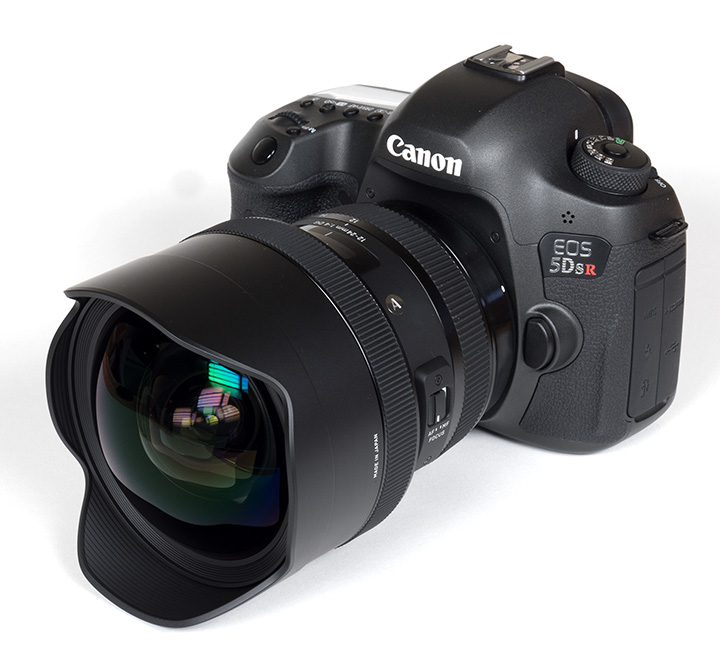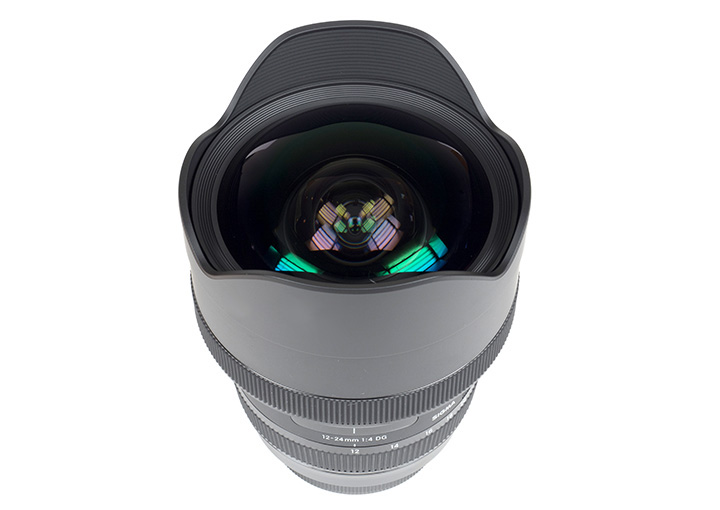|
Sigma 12-24mm f/4 HSM DG ART ( Canon ) - Review / Test |
|
Lens Reviews -
Canon EOS (Full Format)
|
|
Page 1 of 3
Review by Klaus Schroiff, published June 2017

Introduction
Back in 2015, Canon announced the Canon EF 11-24mm f/4 USM L - an almost revolutionary lens. Sure, being so extreme it has its flaws ... and the biggest one is the price tag of 2700USD/EUR - thus it's certainly not a lens for the rest of us. Scary price tags are always an opportunity for third-party manufacturers to step in so it wasn't overly surprising that Sigma released the Sigma 12-24mm f/4 HSM DG ART a few months back. At around 1600USD/EUR it's still far from being cheap but this feels as least a little more achievable. It's actually not Sigma's first approach in this specific market segment. The lens has two predecessors (12-24mm f/4.5-5.6 mk I and mk II) so Sigma is hardly a newcomer. It is, however, their first 12-24mm ART lens and, just like the Canon lens, they managed to keep a constant max. aperture of f/4.
 Unsurprisingly for an ART series lens, the build quality is superb. The body is based on a combination of metal components and Sigma's TSC (Thermally Stable Composite) material. The zoom and focus rings operate smoothly. The most striking feature of the lens is, of course, it's immense bulb-like front element. This is typical for lenses this extreme. This also means that front filter are a no-go. A rear-filter option is also not available. The good news is, however, that the vulnerable front element is recessed within the deep build-in hood so there's some "natural" protection here. Sigma also applied a special coating on the front element that is both water- and oil-repellent. The physical length remains constant throughout the zoom range although this is only true because of the lens hood. There is actually an inner lens tube that moves when zooming. Being a "late" ART lens, it also feature a dust- and splash-proof design. The front cap is put over the front of the lens thus it is not of the usual clip-on type.
Unsurprisingly for an ART series lens, the build quality is superb. The body is based on a combination of metal components and Sigma's TSC (Thermally Stable Composite) material. The zoom and focus rings operate smoothly. The most striking feature of the lens is, of course, it's immense bulb-like front element. This is typical for lenses this extreme. This also means that front filter are a no-go. A rear-filter option is also not available. The good news is, however, that the vulnerable front element is recessed within the deep build-in hood so there's some "natural" protection here. Sigma also applied a special coating on the front element that is both water- and oil-repellent. The physical length remains constant throughout the zoom range although this is only true because of the lens hood. There is actually an inner lens tube that moves when zooming. Being a "late" ART lens, it also feature a dust- and splash-proof design. The front cap is put over the front of the lens thus it is not of the usual clip-on type.
 For your enjoyment ... here's a more detailed look at that beautiful front element.
For your enjoyment ... here's a more detailed look at that beautiful front element.
 The AF performance ... well, honestly who cares? It's not really a lens that you'd use for action photography. That being said it features Sigma's newly designed HSM drive which is both quite fast and near noiseless. We did notice that the AF had a tendency to overshoot a little (but Canon cameras also tend to do that with extreme ultra-wide lenses). Full-time manual focusing is available.
The AF performance ... well, honestly who cares? It's not really a lens that you'd use for action photography. That being said it features Sigma's newly designed HSM drive which is both quite fast and near noiseless. We did notice that the AF had a tendency to overshoot a little (but Canon cameras also tend to do that with extreme ultra-wide lenses). Full-time manual focusing is available.
| Specifications |
|---|
| Optical construction | 16 elements in 11 groups inc. 5xFLD, 1xSLD, 3xaspherical elements |
| Number of aperture blades | 9 (circular) |
| min. focus distance | 0.24m (1:4.9) |
| Dimensions | 102.0x131.5mm |
| Weight | 1150g |
| Filter size | - |
| Hood | build-in, petal-shaped |
| Other features | weather-sealing |
|